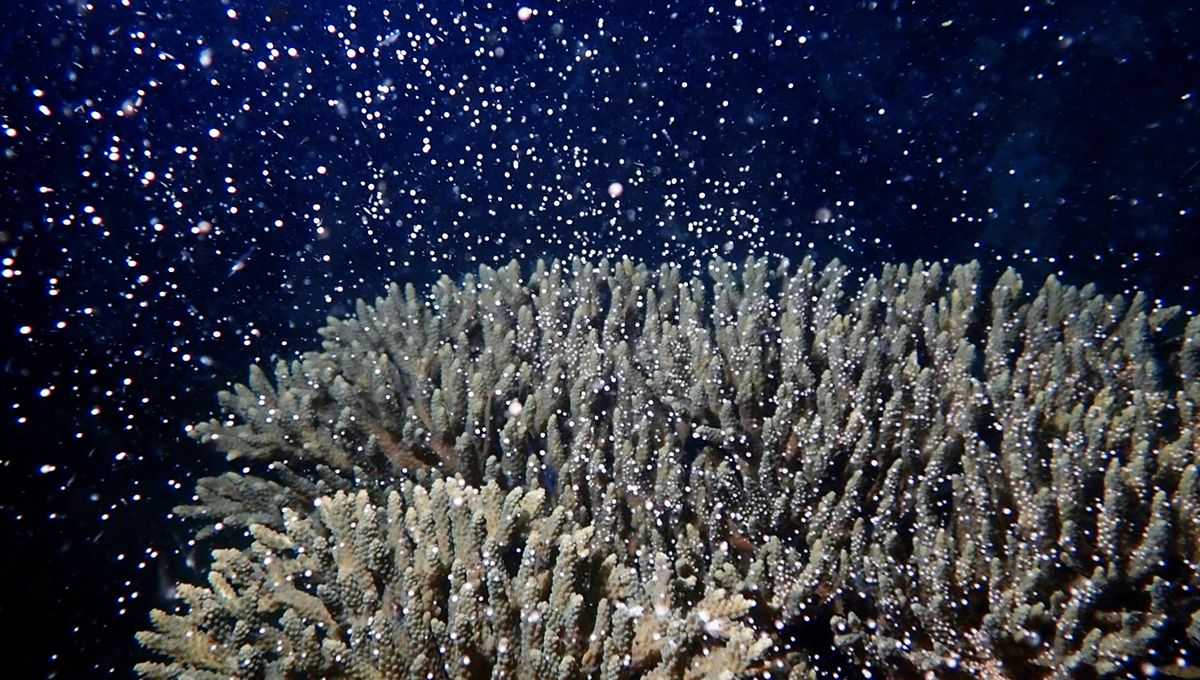
In the waters off the coast of Cambodia, scientists have witnessed a truly incredible event for the very first time. The coral has begun to spawn, representing the first time a mass coral reef spawning event has been observed in this area.
The event began in the first week of March. Coral spawning is not fully understood but is thought to be regulated by both the full moon, as well as changes in ocean temperature and salinity. The coral reefs of Cambodia especially are robust to changes between the wet and dry seasons, and are important habitats for coral species that could be used for restoration projects elsewhere in the Gulf of Thailand.
Spawning is how corals reproduce, and often only occurs once a year when entire groups of corals release their eggs and sperm simultaneously. Depending on the species of coral, the release can last hours or only a few minutes. According to NOAA, the timing of the release is crucial as some of the eggs and sperm (also known as gametes) are only viable for a short time. The sperm and egg must find their counterpart from the same species to fertilize.
“What a spectacular event to witness along our coastline. It was like an explosion of life as the reef released thousands of eggs – spreading as far as the eye could see,” said Matt Glue, Fauna & Flora’s Marine Technical Specialist in Cambodia, in a statement sent to IFLScience.
When the coral egg and sperm are joined, they develop into a coral larva, aka a planula. These planulae float in the water column for some time before dropping to the sea floor – some may even attach with the help of some sticky gland cell secretions and start growing into a new coral colony. The Great Barrier Reef Foundation website writes that not all coral larvae survive to reach maturity as many are consumed by fish and other sea creatures.
The fact that this event was seen indicates good news for the coral reef, and leads researchers to believe that the reef is not unduly stressed by factors such as climate change and pollution that could prevent this spawning event from taking place.
“It is difficult to explain, but the mass spawning is like snow, except instead of falling it moves up slowly, slowly. It is a wonderful spectacle,” said Chantha Chroeng, a Marine Species & Ecosystems Officer at Fauna & Flora.
This leads to a better understanding of the reef which can help inform management decisions and conservation policies to protect this area.
“Coral spawning is truly captivating, and it has left a lasting impact on my soul. When corals spawn, it is a sign that they are flourishing and that the environmental conditions are conducive to their survival and growth,” finished Sorn Srenh, Deputy Chief of Koh Sdach Commune.
Source Link: Watch Corals Release Clouds Of Eggs And Sperm In Cambodia's First Observed Spawning Event